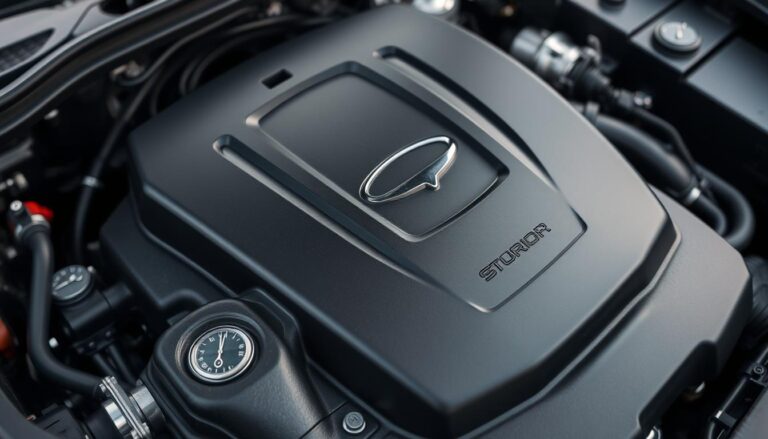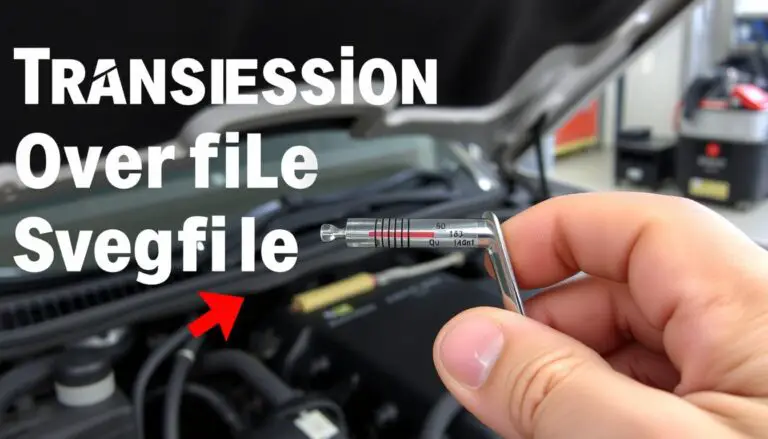The management of car AC pressure is paramount for the preservation and optimal functioning of your vehicle’s air conditioning apparatus. Accumulation of pressure over time can precipitate a decline in performance and potentially inflict harm upon the system.
Acquiring proficiency in the release of this pressure constitutes a fundamental DIY car repair capability, capable of mitigating financial burdens and ensuring the seamless operation of your vehicle’s automotive air conditioning system.
This comprehensive guide will elucidate the procedures for the safe and efficacious management of car AC pressure, facilitating the upkeep of your vehicle’s comfort and operational efficacy.
Key Takeaways
- Understanding the importance of managing car AC pressure.
- Identifying the signs of excessive pressure in your car’s AC system.
- Learning the step-by-step process to relieve car AC pressure.
- Safety precautions to take when working with your car’s AC system.
- Tips for maintaining your vehicle’s automotive air conditioning system.
Understanding Your Car’s AC System
Grasping the complexities of your vehicle’s AC system is imperative for sustaining its peak functionality. This system, comprising several pivotal components, synergizes to facilitate air cooling.
Components of a Car AC System
The system’s core elements encompass the compressor, condenser, evaporator, refrigerant, and pressure valves. Each component is indispensable to the cooling mechanism.
Compressor, Condenser, and Evaporator
The compressor elevates the refrigerant’s temperature and pressure through compression. The condenser then cools the refrigerant gas, transforming it into a liquid. Subsequently, the evaporator facilitates the refrigerant’s expansion and cooling, thus effecting air cooling.

The refrigerant undergoes a phase transition from liquid to gas as it absorbs heat from the vehicle’s interior. Pressure valves manage the system’s pressure, ensuring it operates within safe parameters. An article on AC pressure management underscores the significance of maintaining equilibrium.
Why Pressure Management Matters
Proper pressure management is crucial to avert AC system damage and ensure efficient cooling.
Effects of Excessive Pressure
High pressure can precipitate system failures, leaks, and damage to components such as the compressor. Experts caution that excessive pressure can induce malfunctions, necessitating expensive repairs.
Optimal Pressure Levels
Adherence to optimal pressure levels guarantees the AC system’s efficient operation. It ensures the desired cooling effect while mitigating damage risks.
When to Release Pressure from Your Car AC
Grasping the precise moment to release pressure from your vehicle’s AC system is paramount to averting exorbitant repair costs and ensuring peak functionality. The air conditioning apparatus within your automobile is indispensable for maintaining comfort during vehicular excursions, notably in scorching climatic conditions.
Signs of Excessive Pressure
Excessive pressure within the AC system manifests through a plethora of symptoms. It is imperative to recognize these indicators promptly to execute corrective measures.
Unusual Noises and Poor Cooling Performance
Should your vehicle’s AC emit anomalous sounds or exhibit subpar cooling efficacy, it may signify an issue of excessive pressure. Poor cooling performance not only compromises comfort but also signals potential system strain.
Visible Signs of System Stress
Manifestations such as leaks, frost on AC components, or unusual wear on system parts are indicative of excessive pressure. Proactive inspections are crucial for early detection of these symptoms.
Routine Maintenance Requirements
Adherence to a regular maintenance regimen is essential to forestall excessive pressure in the AC system. This entails adherence to a seasonal maintenance schedule and preparation for any necessary repairs.
Seasonal Maintenance Schedule
Adopting a seasonal maintenance schedule guarantees that your vehicle’s AC system undergoes thorough inspections and servicing at opportune intervals. For comprehensive guidance, refer to resources such as the Toyota Tacoma AC Pressure Chart.
Pre-Repair Preparation
Initiating any repairs necessitates the release of pressure from the AC system. This precautionary measure is critical for safety and to mitigate potential damage to the system.

| Maintenance Task | Frequency | Importance |
|---|---|---|
| Check AC Pressure | Every 6 months | High |
| Inspect for Leaks | Annually | High |
| Clean AC Components | Every 12 months | Medium |
Tools and Safety Equipment Needed
To safely release pressure from your car’s air conditioning system, you’ll need the right tools and protective gear. This not only ensures your safety but also protects the environment and complies with legal standards.
Essential Tools for the Job
Having the correct tools is crucial for the safe and effective release of pressure from your car’s AC system. The primary tools you’ll need include:
Manifold Gauge Set and Recovery Tank
A manifold gauge set is used to measure the pressure within the AC system, while a recovery tank is essential for safely storing the refrigerant that’s released during the process. Robinair and Mastercool are reputable brands that offer high-quality manifold gauge sets and recovery tanks.
Wrenches and Specialized AC Tools
Various wrenches and specialized tools, such as a refrigerant identifier and a vacuum pump, are necessary for handling different parts of the AC system. These tools help in ensuring that the system is properly serviced and that the pressure is released safely.
| Tool | Purpose |
|---|---|
| Manifold Gauge Set | Measures AC system pressure |
| Recovery Tank | Stores released refrigerant |
| Wrenches | Handles various AC system parts |
Safety Precautions and Protective Gear
Safety should be your top priority when working with your car’s AC system. The use of protective gear and adherence to safety precautions can prevent injuries and ensure a safe working environment.
Personal Protection Equipment
Personal protection equipment, including gloves, safety glasses, and a face mask, protects you from potential hazards such as refrigerant leaks and sharp edges.
Environmental and Legal Considerations
It’s also important to consider the environmental impact and legal requirements when releasing pressure from your car’s AC system. Ensure that you comply with local regulations regarding refrigerant handling and disposal. As noted by the
Environmental Protection Agency (EPA), “Refrigerants can contribute to climate change and deplete the ozone layer if not handled properly.”
How to Release Pressure from Car AC: Step-by-Step Process
The procedure for releasing pressure from a vehicle’s AC system necessitates adherence to a series of steps, aimed at averting potential damage and ensuring the system’s optimal functionality. Prior to initiation, it is imperative to grasp the significance of safety protocols and the indispensable role of a manifold gauge set within this context.
Preparing Your Vehicle
Initiating the process of pressure release from your vehicle’s AC system mandates a preparatory phase, characterized by the establishment of a safe workspace and the verification of the vehicle’s readiness.
Engine State and Workspace Setup
It is essential to confirm that the vehicle’s engine is in a state of dormancy. The workspace must be ventilated adequately and devoid of any combustible materials. Safety precautions are of paramount importance to mitigate the risk of accidents.
Initial System Inspection
A preliminary visual examination of the AC system is imperative to identify any signs of leakage or structural compromise. This step serves as a critical assessment of the system’s integrity prior to proceeding.
Locating the Low-Pressure Service Port
The low-pressure service port is a pivotal component in the process of pressure release. Its identification and location are critical for the safe execution of this task.
Identifying Port Colors and Locations
The low-pressure port is typically distinguished by its blue coloration and clear labeling. It is essential to familiarize oneself with its precise location on the vehicle model in question.
Accessing Hard-to-Reach Ports
In certain vehicles, the service ports may be situated in locations that are challenging to access. Utilizing appropriate tools is necessary to ensure safe and unimpeded access without compromising the system’s integrity.
Connecting the Manifold Gauge Set
A manifold gauge set is indispensable for the precise measurement and release of pressure. The correct attachment of the hoses is paramount for the acquisition of accurate readings.
Proper Hose Attachment Technique
The hoses must be securely attached to the corresponding ports. The tightness of the connections is critical to prevent any leakage.
Reading Initial Pressure Levels
Following the attachment, it is necessary to record the initial pressure readings. This step facilitates an understanding of the AC system’s current state.
Safely Releasing the Pressure
The release of pressure must be executed with caution to prevent damage to the system or personal injury.
Controlled Pressure Release Method
The pressure should be released gradually using the manifold gauge set. Continuous monitoring of the gauges is essential to maintain control over the release process.
Monitoring the Process
It is imperative to vigilantly observe the pressure readings as the pressure is being released. This ensures that the process remains controlled and safe.
Verifying Successful Pressure Release
Upon completion of the pressure release, it is crucial to verify its success by reviewing the final pressure readings. This step confirms that the pressure has been safely and effectively released.
Post-Pressure Release Procedures
The act of releasing pressure marks the commencement of a critical phase; the meticulous inspection and recharging of your vehicle’s AC system. This phase is paramount for guaranteeing the optimal functionality and performance of your car’s air conditioning system.
System Inspection After Pressure Release
Upon the release of pressure, a comprehensive examination of the AC system is imperative. This is to uncover any potential damage or wear that may have occurred.
Checking for Damage or Wear
An examination of the system’s components, encompassing hoses, fittings, and the compressor, for signs of damage or excessive wear is essential. This step is crucial for averting future system failures.
Component Integrity Verification
It is imperative to verify the integrity and functionality of all components. This entails scrutinizing for leaks, corrosion, or other forms of damage that could impede the system’s performance.
Recharging Your AC System
The recharging of the AC system necessitates the identification of the correct refrigerant type and quantity, alongside the adoption of the appropriate recharging technique.
Determining Correct Refrigerant Type and Amount
Referencing your vehicle’s manual or a professional database is essential to ascertain the correct refrigerant type and quantity for your car’s AC system. The utilization of an inappropriate refrigerant can precipitate system failure.
Proper Recharging Technique
For a comprehensive guide on how to recharge your car’s AC after compressor replacement, consult this article. The adoption of a proper recharging technique is vital for the longevity and efficiency of your AC system.
Testing System Performance
Post-recharging, it is imperative to test the system’s performance to affirm its correct operation.
Temperature and Pressure Checks
Conducting temperature and pressure checks is essential to verify that the system operates within the recommended parameters. This involves utilizing a manifold gauge set to measure the system’s pressure.
Leak Detection Methods
Employing leak detection methods, such as a leak detector or soapy water, is necessary to identify any leaks in the system. Addressing leaks is crucial for maintaining the system’s efficiency and preventing refrigerant loss.
| Procedure | Description | Importance |
|---|---|---|
| System Inspection | Inspecting the AC system for damage or wear after pressure release. | High |
| Recharging | Recharging the AC system with the correct refrigerant type and amount. | High |
| Performance Testing | Testing the AC system’s performance through temperature and pressure checks. | High |
| Leak Detection | Identifying leaks in the AC system using appropriate methods. | High |
Conclusion
The imperative of car AC maintenance transcends mere convenience, embodying a critical factor in the longevity and performance of your vehicle. The act of releasing pressure from your car’s AC system stands as a pivotal step within this maintenance regimen. Adherence to the methodologies detailed in this discourse guarantees the optimal functioning and efficiency of your AC system.
A car AC system, when properly maintained, not only enhances the driving experience but also serves as a bulwark against the financial burden of future repairs. This DIY endeavor, though seemingly daunting, is, in fact, within the realm of the feasible, provided one possesses the requisite tools and acumen.
In essence, the regular maintenance of your car’s AC system, encompassing the release of pressure, is indispensable for its overall health. Through a comprehensive understanding of your vehicle’s AC system components and adherence to the guidelines presented herein, you can ensure the continued smooth and efficient operation of your AC system.
FAQ
What is the purpose of releasing pressure from a car’s AC system?
Releasing pressure from a car’s AC system is paramount for maintenance, repairs, and to ensure efficient and safe operation. It prevents damage to the system and its components, thus maintaining its integrity.
How often should I check my car’s AC system pressure?
Regular checks of your car’s AC system pressure are advisable during routine maintenance, such as seasonal inspections. Also, perform checks when you observe signs of excessive pressure, like unusual noises or diminished cooling performance.
What are the signs of excessive pressure in a car’s AC system?
Excessive pressure in a car’s AC system manifests as unusual noises, diminished cooling performance, and visible signs of system stress. Observing these symptoms necessitates an inspection and potential pressure release from the system.
What tools are required to release pressure from a car’s AC system?
Essential tools for releasing pressure include a manifold gauge set, recovery tank, wrenches, and specialized AC tools. Utilizing the correct tools is imperative for a safe and effective process.
How do I safely release pressure from my car’s AC system?
To safely release pressure, first locate the low-pressure service port. Then, connect a manifold gauge set. Follow a controlled pressure release method while monitoring the process closely. Adherence to proper safety precautions and the use of protective gear are crucial.
What should I do after releasing pressure from my car’s AC system?
Post-release, inspect the system for damage or wear. Recharge the AC system with the correct refrigerant type and amount. Perform a system performance test, including temperature and pressure checks, and employ leak detection methods.
Can I release pressure from my car’s AC system myself, or should I seek professional help?
While releasing pressure yourself is feasible with the appropriate tools and knowledge, if uncertain or uncomfortable, professional assistance is advisable. A mechanic or AC technician can ensure the process is executed correctly and safely.
What are the environmental and legal considerations when releasing pressure from a car’s AC system?
Compliance with environmental regulations and guidelines is critical when handling refrigerants to prevent leakage and minimize environmental impact. Familiarity with local laws and regulations regarding AC system maintenance and repairs is also essential.


